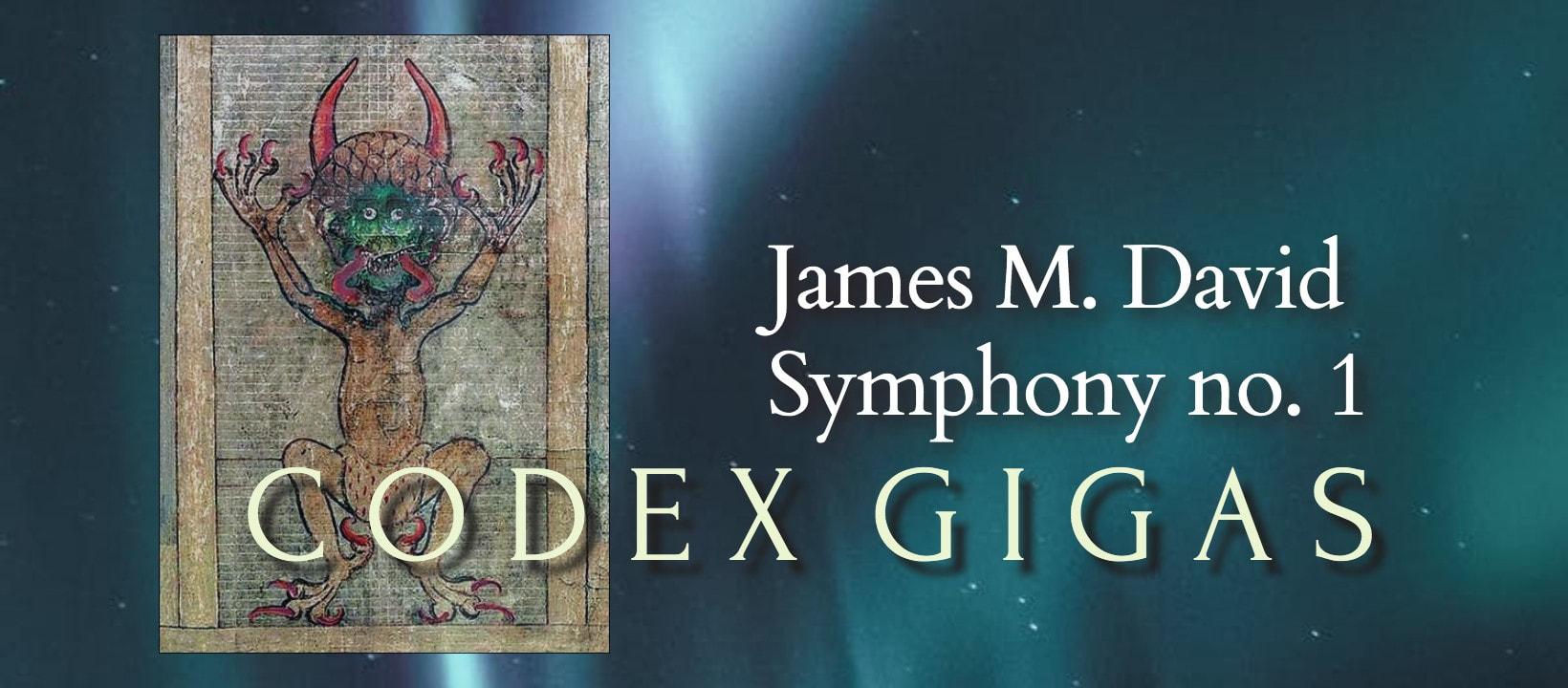Symphony no. 1 - Codex Gigas
for wind symphony
31 minutes - $400 parts rental, $85 score purchase
Available at Murphy Music Press
View Perusal Score
Live Recordings
Movement I
Movements II, III, and IV
Program Notes
|
The second decade of the 21st century has brought forth some of humanity's greatest achievements in technology and science, but has paradoxically seen a disturbing rise in misinformation and paranoia. My first symphony attempts to deal with my own frustrations and fears about our current times through the lens of a variety of masterworks from the past.
The symphony draws inspiration from the 13th century medieval text also titled Codex Gigas which was completed in a Bohemian monastery in the modern-day Czech Republic. Most significantly, this monastery was destroyed during the Hussite Revolution of the 15th century which led to a long history of the work being moved and reacquired many times since its initial creation. Of particular note to my work are the large illustrations included in the text, which will serve as the basis of two of the movements. Most famously are full-page illustrations of the devil and the City of Heaven (shown above). Compositional techniques from the time period, including isorhythm and organum harmonizations, will be utilized throughout. The Codex Gigas also has a fascinating tangential connection to contemporary wind band music through Czech-American composer Karel Husa. Music for Prague 1968, as is well-known, was based in part on medieval chant from Bohemia during the Hussite Revolution which ties it directly to the history of the Codex Gigas. The final movement will quote the chant "Ye Who Are Warriors of Our God" as part of its depiction of the City of Heaven. Husa's own frustrations and fears were expressed in his 1970 work Apotheosis of this Earth and my symphony will hopefully recall some of this energy and intensity as well. Ultimately, the symphony should be seen as a celebration of knowledge, reason, and intellect as we struggle to overcome our baser instincts and prejudices. |
I. Light After Darkness – “post tenebras lux…”
|
